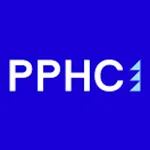I read part one of my column again and hoped I conveyed that one of the most important keys to success is to have a vision, a goal if you will, that by earning anything less than 25 percent to 35 percent, or more, pre-tax profitability just cannot be in the cards.
If your profitability is not where you want it to be, you need to understand your current financial results and then ask your “brain” what needs to change to get where you want to be.
Keep on asking yourself the same question until you come up with an answer. You will come up with an answer!
I also hope that my columns will give you some insight into what needs to be done.
Many successful athletes envision what it feels like to be successful. They will picture what it feels like to make the basketball go through the hoop every shot.
While it may not happen 100% of the time, I guarantee you they will improve tremendously.
You need to envision the same for your agency. Feel the success, feel the higher profitability.
Before you read any further, take out pencil and paper and write down you goals and aspirations. Every day read what you wrote, add or delete as the case may be but read where you want to be.
You will get there sooner than you think! (By the way, your feedback is important to me, positive or negative. I want to write what you are interested in reading!)
The fundamentals
My local high school baseball and football team have won many championships. Even if they are not number one in a given year, they are always in the hunt. They always practice the fundamentals over and over again.
You need to understand the fundamentals needed to succeed. For those of you who have read this before, we are going over the fundamentals!
If your profits are dismal, you may not be paying attention to the following factors (this is in addition to fear and poor management skills):
--Hourly rates are too low.
--Staff utilization rates that are below industry standards.
--Inaccurate or no time keeping.
--No tracking individual client profitability.
--Over servicing clients, which can be pinned on fear (see prior column), improper budgeting or good intentions leading to more time invested in the client’s behalf than he or she is paying for. This in turn leads to one or more of the most profit-pruning actions of all - write-offs!
Now for those fundamentals:
--Write or update a business plan.
--Develop a short-term and long range budget.
--Properly plan for staff needs.
--Develop a marketing plan. If one is in place, have you implemented the plan and is it working?
--Marketing is expensive and worthless if you cannot close the deal. Do you understand the difference between marketing and selling?
--If possible, develop and promote a unique strategic position.
--Aim for 80 percent to 85 percent staff utilization. Do not achieve this by over servicing clients.
--Monitor write-offs. Do not carry work-in-progress if it cannot be billed. Be honest with yourself.
--Track client profitability. What good is a “marquee” client if you lose money on every hour or project. (Be careful that you are not so dependent on the client that a loss puts you out of business.)
--Monitor individual staff profitability. (we do his in my firm monthly.)
--Monitor overall agency profitability.
--Determine billing rates based on your labor, overhead, and desired profitability goals.
--Make sure your rates are competitive. Never quote a price until you understand the value your agency brings to the table and the projected profit to the agency. I will write more on this subject.
Reaching your profitability goals
Obviously, the first step in reaching your profit goals is to understand the fundamentals and put them into play. Your agency will not maximize its profit potential without a budget - number two on the fundamental list above.
A budget can help identify potential problems in achieving specified organizational goals and objectives. By quantifying potential difficulties and making them visible, budgets can help stimulate agency management to think about ways to overcome those difficulties before they are realized.
Participating in the budget process helps produce a spirit of cooperation, motivate employees, and install a feeling of team work.
Your minimum pre-tax adjusted profit goal should be 25 percent with a stretch goal of 33 percent or whatever you feel is appropriate.
Adjusted profit is profit with “excess” compensation and perks subtracted that may be taken by principals of independently owned agencies.
By the same token, if your salary is below industry standards, budget a salary level that is the industry standard or whatever you want.
For example, if you are earning $125,000 and other executives in your position earn $300,000, the higher should be used in the budget process.
This is key: stress to staff and management how critical hourly billings are to the agency’s bottom line. The amount of hours a staff person may bill should be in the 80 percent to 85 percent range, the target should be based on 1,800 hours (e.g. the amount of hours during a 40-hour week in a year minus vacations, holidays, personal days and continuing education.
While there is always a possibility that staff will charge more time to clients than they actually spend working, hopefully this will not be the case with staff education. A time and billing system may help in this area specifically if staff are required to post time on a daily basis.
Remember that time and billing software is a tool that helps management better understand the cost of providing services, not necessarily the amount billed to the client.


 WPP reported a 5.5 percent decline in Q1 PR revenues to $292M as its BCW and Hill & Knowlton units suffered the loss of Pfizer assignments, and cutbacks in client spending due to the economic uncertainty.
WPP reported a 5.5 percent decline in Q1 PR revenues to $292M as its BCW and Hill & Knowlton units suffered the loss of Pfizer assignments, and cutbacks in client spending due to the economic uncertainty. Interpublic CEO Philippe Krakowsky said the firm is off to a “solid start to the year” as its flat $2.2B net revenues are in line with 2024 financial targets.
Interpublic CEO Philippe Krakowsky said the firm is off to a “solid start to the year” as its flat $2.2B net revenues are in line with 2024 financial targets. Why financial planning always plays a crucial role in every PR firm’s success.
Why financial planning always plays a crucial role in every PR firm’s success. Omnicom CEO John Wren reports Q1 revenues jumped 5.4 percent to $3.6M, powered by a solid 7.0 percent rise in its advertising & media segment.
Omnicom CEO John Wren reports Q1 revenues jumped 5.4 percent to $3.6M, powered by a solid 7.0 percent rise in its advertising & media segment. Public Policy Holding Company registered 24.1 percent growth to a record $135M during the past year, which included the results of the March 1 acquisition of Multistate Assocs.
Public Policy Holding Company registered 24.1 percent growth to a record $135M during the past year, which included the results of the March 1 acquisition of Multistate Assocs.


 Have a comment? Send it to
Have a comment? Send it to 
No comments have been submitted for this story yet.